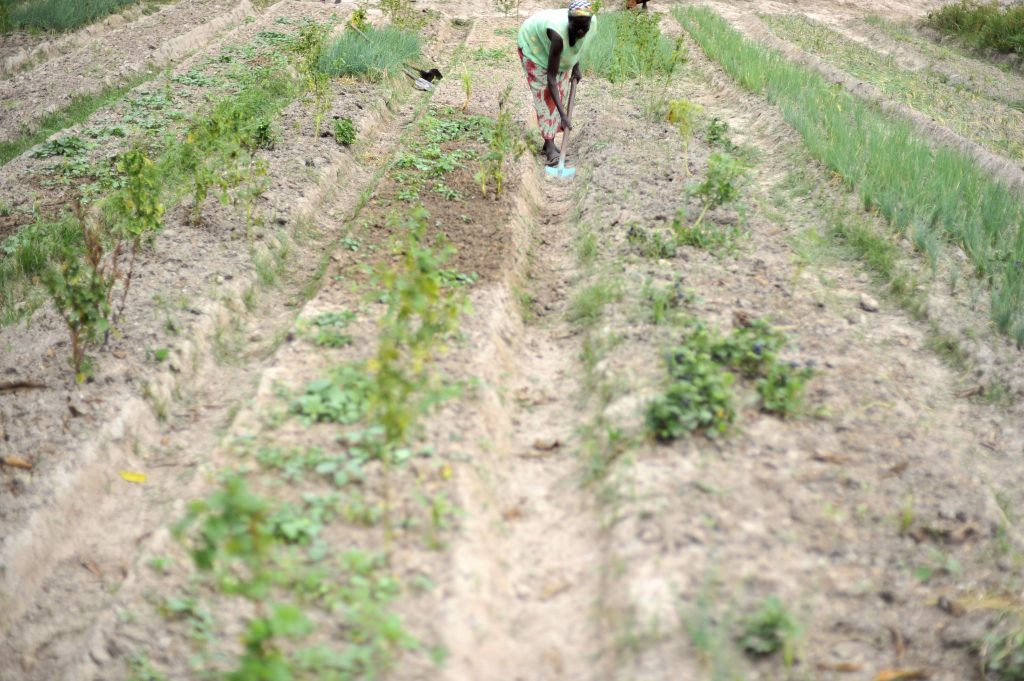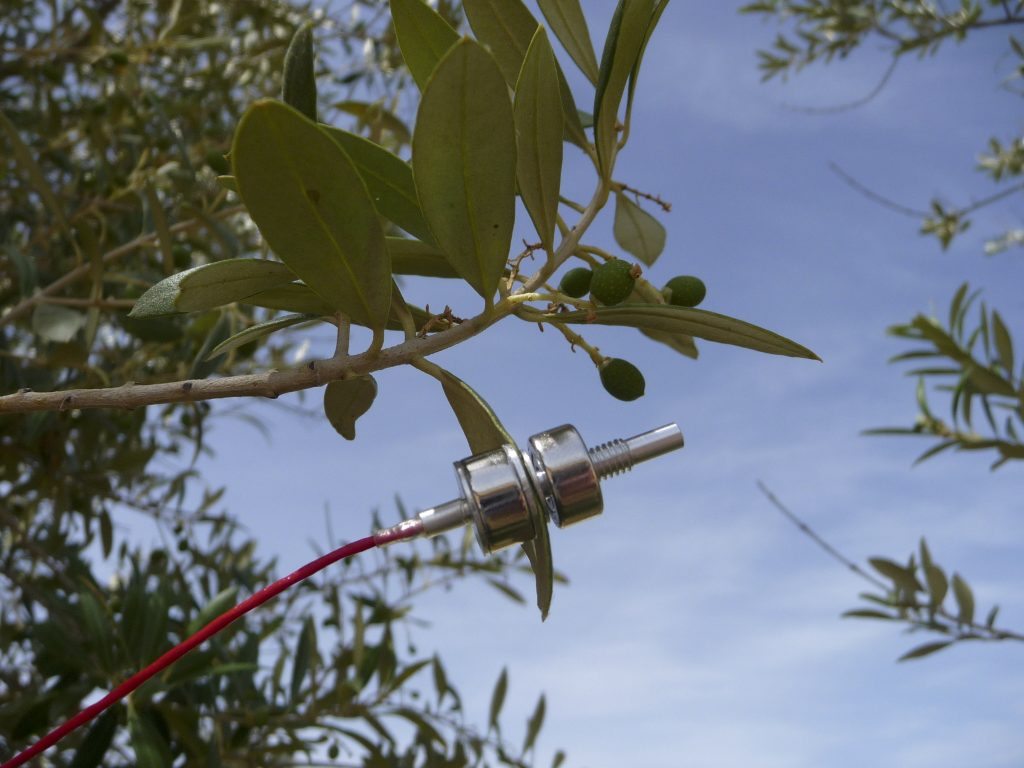Jonathan Andrews spoke to a select panel to discuss the best approaches to drive water demands down and push agriculture productivity up
Recent studies suggest the GMO seed revolution won’t reduce farmers’ demands and dependence on irrigation. How can we tackle their demands on water for crops?
 Jeremy Bird, Director General, International Water Management Institute (IWMI)
Jeremy Bird, Director General, International Water Management Institute (IWMI)
Some people point to savings in water consumption, while others proclaim any such savings are small, incremental changes and that monocrop agriculture has already compromised water efficiencies of a more diverse agricultural system. Probably more important than the changes in the crop water demand of a particular variety is the current emphasis in crop research on addressing resilience to highly variable water supplies–both in periods of excess through flooding and periods of drought and dry spells.
Raising the productivity of crops in relation to the water they consume (for example, in terms of kilogramme per cubic metre or nutritional value produced per cubic metre) to meet food demands of tomorrow’s population is essential. It requires a range of technological, agronomic, institutional and political interventions. The building blocks of many solutions are already available but need to be adapted to individual farming systems in their agro-climatic, political and institutional settings.
 Simon Rüger, Product Manager Fertigation Module, Yara International
Simon Rüger, Product Manager Fertigation Module, Yara International
Effective, well-timed irrigation is critical for sustainable and profitable production with high yields, good harvest quality and optimum fertiliser efficacy. This practice is possible by irrigation on demand–only irrigate as much as the plants need– and made possible by solutions that allow real-time monitoring of crop, soil and weather data to ensure optimal use of scarce resources like water, land and nutrients.
 Eduardo Mansur, Director, Land and Water Division, Food and Agriculture Organisation (FAO), UN
Eduardo Mansur, Director, Land and Water Division, Food and Agriculture Organisation (FAO), UN
We are currently facing new and growing challenges in agriculture, due to a changing climate and the associated trend to more extreme weather conditions. In this context, water management– among other actions–will become increasingly important in crop production. Biotechnologies have a role to play in addressing these challenges, as they offer a wide range of methods for increasing and improving crop production. GMOs represent only a tiny tip of the whole universe that biotechnologies can offer to agricultural sectors. We should recognise that the use of biotechnologies to enhance tolerance to water stress (or drought tolerance) in crops has not been easy. Plants’ response to water deficit is a complex phenomenon involving numerous biochemical pathways, physiological responses and even anatomic features. A successful intervention needs to touch numerous causes at the same time. Regarding water scarcity and agriculture, a more promising strategy is the use of a combination of multiple approaches. The adoption of good agricultural practices is essential–and in many cases, the most viable option. This includes sustainable soil management, water harvesting, targeted irrigations schemes, and more.
 David Molden, Director General, International Centre for Integrated Mountain Development (ICIMOD)
David Molden, Director General, International Centre for Integrated Mountain Development (ICIMOD)
Farming practices including soil management, rainfall management, and crop varieties make a significant difference in water use, and this can be to use more water or use less water. One caveat is that the impacts of various practices are very much context specific and depend on a variety of perspectives from a farmer’s perspective, to society’s perspective, and from farm to river basin to global considerations.
Can micro-till or even no-till play a role to help farmers reduce water use? What are the constraints?
Bird, IWMI
Maintaining crop residue cover on the soil surface through limited or zero tillage approaches can reduce evaporative losses from the soil in early stages of crop growth but introduces a need for measures to reduce growth of competitor plants/weeds. It is one of a number of soil and landscape management measures, such as mulching and contour bunds of different types, which can improve soil moisture management and retain more of the rainfall in the root zone. These also have considerable and probably greater benefit in reducing soil erosion and ultimately avoiding land degradation, thereby securing the livelihoods of already vulnerable populations. An estimated 2 billion hectares–23 percent of landscapes under human use–are degraded, negatively impacting ecological integrity and agricultural productivity. The related carbon mitigation benefits of improved soil management raise opportunities for some of these initiatives to be financed through climate funding mechanisms.
Rüger, Yara International
In the debate about sustainable agricultural water use, focus is needed on the combination of many issues such as irrigation technology, water retention of the soil and drought tolerant varieties. In addition, nutrient management is central when looking at water footprint analyses, as nutrient supply exerts strong control over crop yield, water consumption, and potentially contributes to pollution of freshwater bodies. If crops are not optimally fertilised, more water is needed for every kilogram of final product. Proper crop nutrition management can substantially improve agronomic water use efficiency.
Mansur, FAO
No-tillage or minimum tillage systems are gaining increased attention as a way to reduce the water footprints of crops. Indeed, they are effective in reducing evaporation from soil, increasing soil water infiltration, and increasing the soil water holding capacity and soil moisture. In turn, they also contribute to improving the recharge rate of the water table and allow for more constant flow in the river system. But the water-use- efficiency of crops is also related to soil health. Healthy soils counting on a stable biological porosity and well-developed root systems permit an efficient water and nutrient cycling. Soil organisms improve soil structure, prevent compaction and facilitate root penetration.
The downside effects of practising minimum/zero tillage are related to management decisions, which have to be adapted to the local characteristics of the field (topography, geology, soil type), to the climate, and to the social and cultural settings. In this regard, possible ‘side-effects’ should be assessed beforehand. For example, when no-tillage is not properly conducted, it can result in an increased use of herbicides for weed management and, as a consequence, a reduction of the water quality.
Molden, ICIMOD
Tillage practices influence soil water and minimum or no-till practices are an especially important means for farmers to manage their water supplies. As such it is a very important water management practice for now and the future. It is important to unpack the words water use.
Two important considerations are water applied, and second, water consumed by evapotranspiration. In water scarce environments it is important to think in terms of evapotranspiration, because that water goes to the atmosphere and is not available for reuse. So many practices like no till help maintain soil moisture and reduce the need for water application, but may or may not increase evapotranspiration. Tillage practices that reduce the evaporation component are quite important, as crop transpiration contributes to more crop biomass.

In which situations can GMO help boost agricultural resilience?
Bird, IWMI
Biotechnology aims to speed up the more conventional selective breeding process and therefore has potential to increase resilience, but in a shorter time frame. Most obvious applications are on increasing tolerance to pest attacks, during periods of drought and flood submergence, as well as for heat and salinity tolerance. However, in many countries, the question remains as to whether or not GMO varieties can be used at all, meaning that continued emphasis on selective breeding approaches for stress-tolerant varieties remains important.
Mansur, FAO
Climate change and other issues such as water scarcity, access to arable lands and a growing population with changing food habits are significant challenges to agricultural production. Enhancing productivity, i.e. increasing production per unit of inputs is a need to feeding the world. Plant breeding aiming to obtain optimal yields while using fewer inputs–such as water, fertilisers or pesticides–may enhance the overall resilience of food systems. Cultivation of water-use efficient and drought-tolerant plants can have significant effects on agricultural resilience only if accompanied by adoption of improved agronomic practices like sustainable soil management, rotations, crop residues management, and water harvesting.
Molden, ICIMOD
Crop varieties (GMO or otherwise) that are more disease resistant or drought resilient are important to deal with climate and environmental uncertainties and are a component of resilience building. Also, if crop yields are ruined because of disease or drought, it can represent a huge loss of water that could have been better used. Having said that we do need to take a holistic approach for resilience building that considers other important issues, institutions and diversity.
How much of a role can non-GMO efforts play?
Bird, IWMI
Given the wide differences in the effectiveness of water management practices around the world, and solutions to many of the problems already exist, there is considerable scope to meet the water security challenge. However, unless water management for a crop is secure, many other investments, including improved seeds, labour and fertiliser, are forgone. It does though require an enabling policy framework and incentive mechanisms to bring about change, and also sometimes a solution that involves other sectors. For example, the solar irrigation revolution. In India, solar irrigation pumps are being subsidised by the government as a carbon mitigation measure. The risk though is that aquifers will then be over-pumped.
Rüger, Yara International
Sustainable agriculture requires best farming practices in all agricultural disciplines, in order to increase agricultural productivity and maximise farm profitability while minimising environmental harm. In our view the key is that resources must be used more efficiently, maintaining or increasing yields while reducing losses to the environment.
Mansur, FAO
Non-GMO biotechnologies have been proven extremely effective in enhancing the resilience of agricultural production systems. An example is the New Rice for Africa (NERICA) varieties, which have been developed using biotechnologies that enable the crossing of two species of cultivated rice, African rice and Asian rice. These NERICA varieties combine the high yields from the Asian rice with the ability of the African rice to thrive in harsh environments and are now widely distributed in sub-Saharan Africa.
When safely deployed and accessible to farmers, Marker Assisted Selection (MAS), Genomic Selection (GS) and New Molecular Breeding Technologies, may assist in developing plants that are more efficient in water uptake (deeper root system), transport (reduced plant size) and use (reduced growth duration) or that are more tolerant to drought-induced stresses.
Molden, ICIMOD
It is important to rely on a broad diversity of practices for building resilience. For example, to look beyond the mix of rice, wheat and maize to the many types of crops and farming systems that are necessary to build diversity for the future. We need to pay attention to diversity in agriculture. For many farmers having higher valued crops is important, and for society, the nutrition from a range of agricultural products is important.
Does the answer lie in more efficient irrigation?
Bird, IWMI
To some extent, yes. This is within our grasp with the technology available. However, we need to avoid an over- simplification on irrigation efficiency. It is too easy to look at just field level and say that we can save half the irrigation water by shifting from more traditional surface irrigation to say drip irrigation. Irrigation systems are part of a wider hydrological system. Water seeping through the ground in surface irrigation systems can be reused downstream or to replenish groundwater systems that in turn can be pumped for irrigation elsewhere. In some cases, farmers’ crop choices change to achieve higher returns when more efficient irrigation becomes available. However, these can also be more water-consuming crops, thereby limiting actual water savings.
Rüger, Yara International
Efficient irrigation and supporting tools for improved precision in farm management, including special solutions for water management are key for sustainable agriculture. As part of Yara International’s offerings on Farm Management Systems, the Yara International Water Solution is an integrated tool enabling farmers to irrigate on-demand and save 20 to 30 percent of water. A key component is the innovative Water-Sensor, which assesses the water status of the crop by measuring the pressure of the leaf. Through an online system and software platform, the measurements are translated into precision supply of water and crop nutrients.
Mansur, FAO
Yes. But irrigation is not a stand-alone solution. It has to be associated with other measures, such as sustainable soil and water management. Also, the impact of more efficient irrigation depends on wider policy decisions regarding the destiny of any saved water. For example, whether this water remains available for use within the agricultural sector, or whether it is allocated to the environment, cities or industries. Raising irrigation efficiency, through improvements to the operation and management of irrigation systems, the use of more efficient techniques at farm level including drip irrigation, and changing mindsets, remains an important component of strategies to support resilience. How well these different types of intervention work depend on several factors such as, the type of irrigation system and crop, and the length, severity and predictability of shocks such as drought.
Molden, ICIMOD
Part of the answer will surely be in better irrigation. However, much has been written about what comprises better or more efficient irrigation, and we have to look beyond the classic visions of irrigation efficiency, which can dramatically overstate how much water can be saved from irrigation.

What are some of the non- technological options? Is local farmer knowledge able to assist on a large scale?
Bird, IWMI
There are many cases where traditional technologies can help to improve water management and restore farming systems. Take, for example, the rainwater harvesting techniques in Rajasthan that led to Rajendra Singh, Chairman of the nongovernmental organisation Tarun Bharat Sangh, being awarded the 2015 Stockholm Water Prize. Transferring simple technology across regions can also have significant potential. For example, low-cost laser grading land preparation techniques that provide a more uniform slope to irrigation furrows and can save up to 15 percent of water as well as the diesel used to pump it. Similarly, simple ‘wetting front detectors’ inserted in the soil can inform farmers about when and how much to irrigate, thereby reducing over-applications or water stress. Local knowledge on crop water management can help, but may not be sufficient to build resilience when climate variability increases and undermines the very basis of past experience.
Rüger, Yara International
Whereas high expectations are set for big data in agriculture, we believe the most critical part of the data revolution in agriculture is related to the agronomic interpretation of the signals received from the various devices. Precision farming is not just about technology, but it is about turning the data into valuable knowledge for the farmer in the form of fertilisation and irrigation recommendations. This translation of data into a decision support tool requires the knowledge and experience from the farmers.
Mansur, FAO
All knowledge starts with local experiences, so of course local farmer knowledge and family farming are perfectly capable, and have actually been assisting increased and improved agriculture for centuries. What is required from researchers and practitioners is to use the available knowledge–including traditional knowledge–to advance innovative approaches that will address the current challenges, such as climate change and increasing water scarcity. That is the reason why FAO launched a new Global Framework to address water scarcity in agriculture in a changing climate.
Molden, ICIMOD
There is much to learn from the farming community who have to live with water scarcity and a dynamic social and ecological environment. We should carefully consider how they adapt and develop solutions for changing environments. There are many resource-poor farmers in the world who are developing water and agricultural solutions that will help improve the livelihoods of millions.
I would like to bring an example from the work of the ICIMOD in the mountains and hills of the Hindu Kush Himalayas. Here there is an issue of too little water, and too much water, and resilience building is a key. For many hill farmers, access to water is a real problem. ICIMOD works to develop resilient mountain villages. Springshed management, water harvesting and soil moisture practices are important. In addition, people are looking to higher value crops and getting them to market for livelihood. Plus they rely on climate services, finances and increasingly on insurance.
Do we need to look beyond the actual farming procedures and more at the bigger picture such as reducing food waste?
Bird, IWMI
The FAO estimates that about one- third of the food produced (1.3 billion tonnes) gets wasted, which has massive implications for resource use. Let me highlight just two dimensions to food waste. One where harvested crops are rendered unusable due to inadequate storage and transport arrangements–this is an issue predominately for small-scale and subsistence farming and requires actions along the value chain. The second relates to waste in processing and shelf life regulations, particularly as expectations on harmonised size and quality of food products have become prominent in consumer behaviour. Both are important in relation to sustainability and efficiency of resource use. By reducing crop losses in storage and transport, there will also be a significant benefit to incomes and livelihoods.
Rüger, Yara International
An important move will be industry partnerships that will offer improved crop management for farmers by optimising the use of water and crop nutrition. The combination of crop, soil and weather data are key to allow fertiliser and irrigation practice on demand.
A recently started collaboration between Pessl Instruments and Yara International allows for such a solution. The combination of Pessl’s holistic solutions of hyper local weather, soil moisture and weather forecast, together with the Yara International Water-Sensor will be the perfect fit for better, more sustainable management of farms.
Mansur, FAO
Yes, absolutely. Changing food habits of a growing population pose a major challenge that requires innovative approaches, and this includes reducing food waste. On average, food losses and waste represent 30 percent of the global food chain. For certain food products, like fruits and root crops, it can reach a shocking figure of 50 percent waste. You can imagine the major impact in water withdrawals in agriculture, if we reduce food waste. We must pursue this path, to feed a growing population. This debate is exploring the keys for agriculture resilience. Irrigation is certainly part of the solution, but we know that only 20 percent of the world agriculture is currently under irrigation schemes, producing about 40 percent of the food crops. We must pay attention to rain fed agriculture, responsible for the other 60 percent.
Molden, ICIMOD
While there is considerable scope for improving agricultural water management practices, there may be more scope for lessening future water demand and use by changing food consumption patterns. Reducing the shameful amount of food waste will lessen the amount of water waste, plus, other aspects of the food chain like packaging and changing diets, especially the growing demand for meat, are also important to consider.








